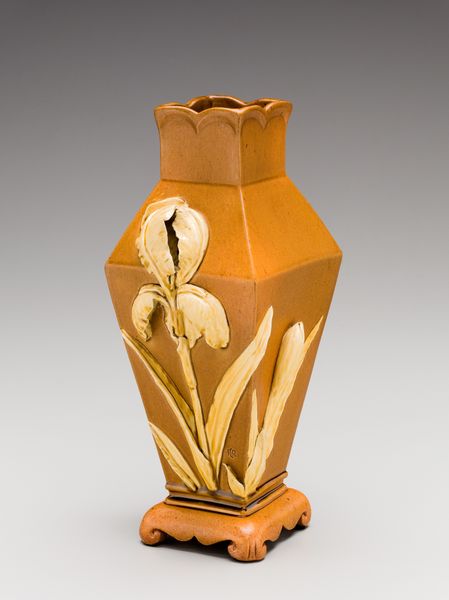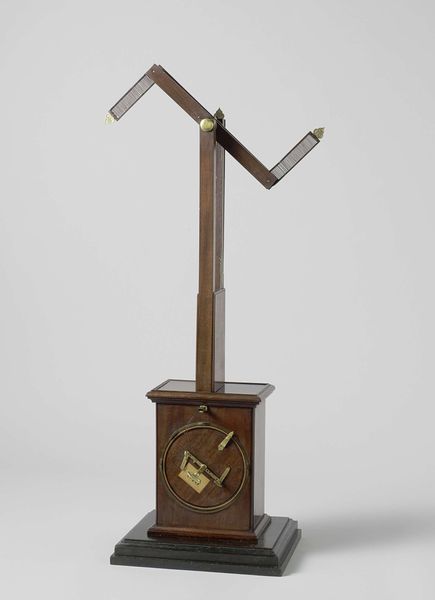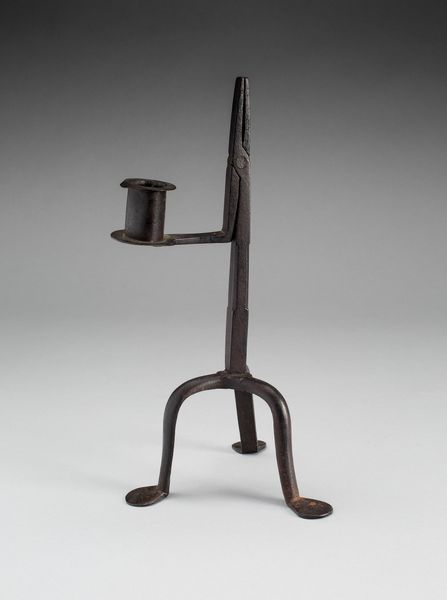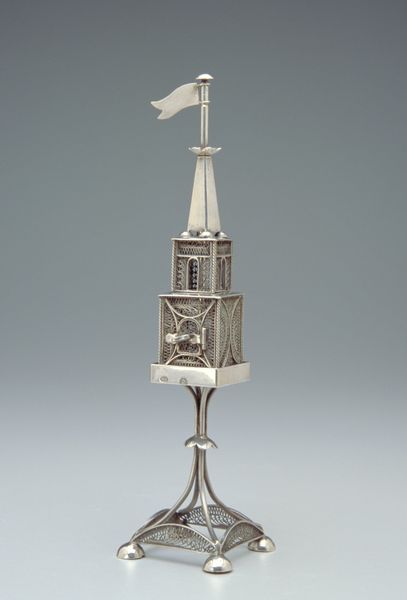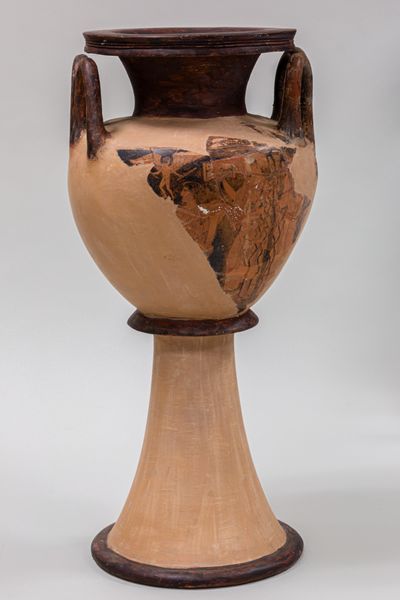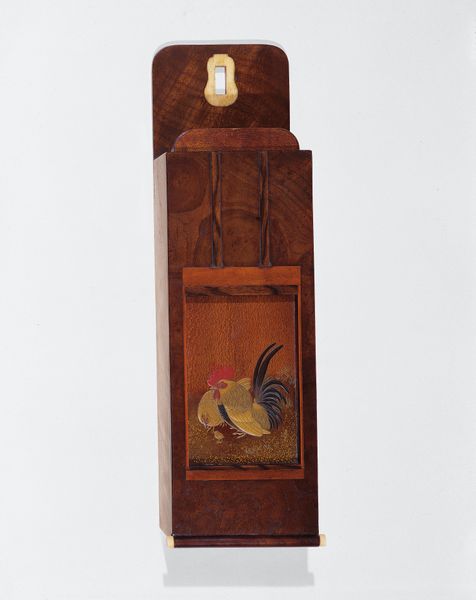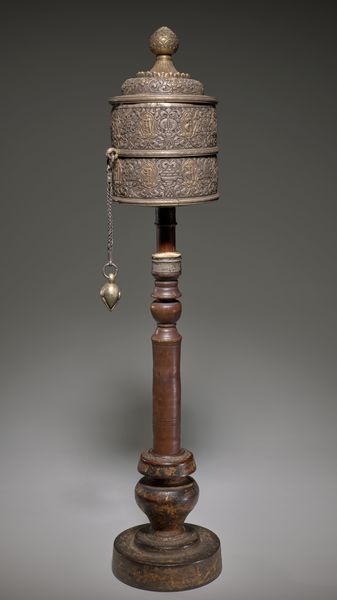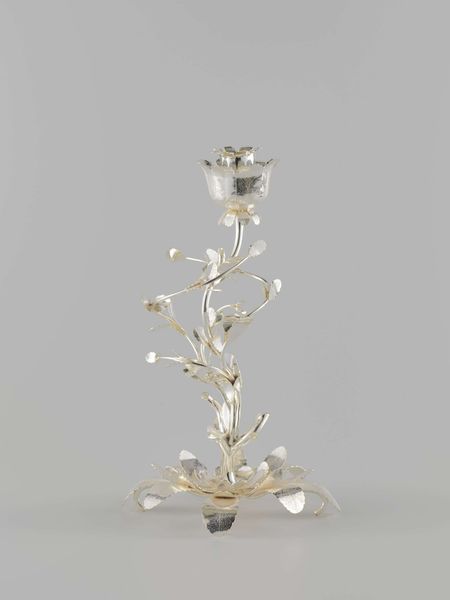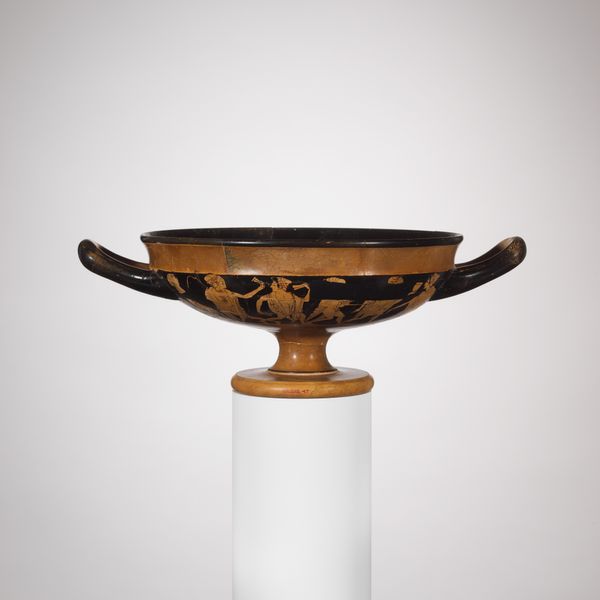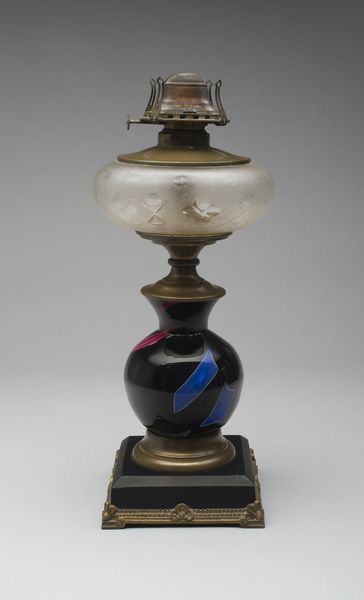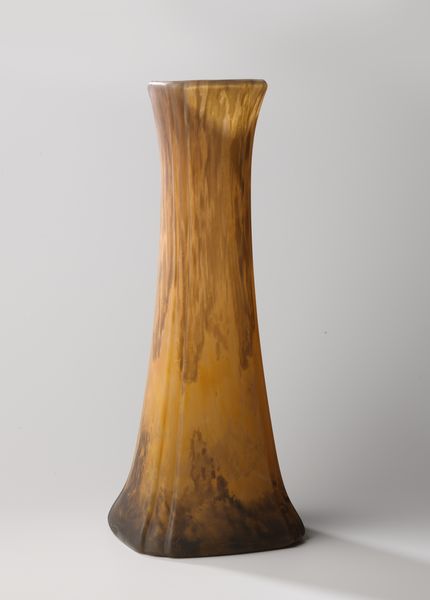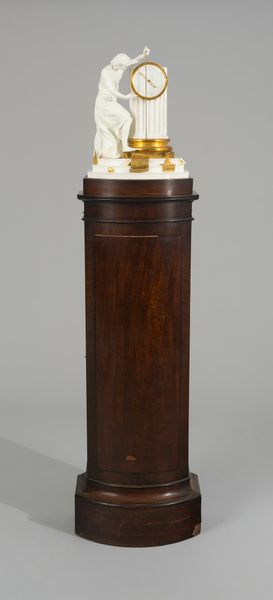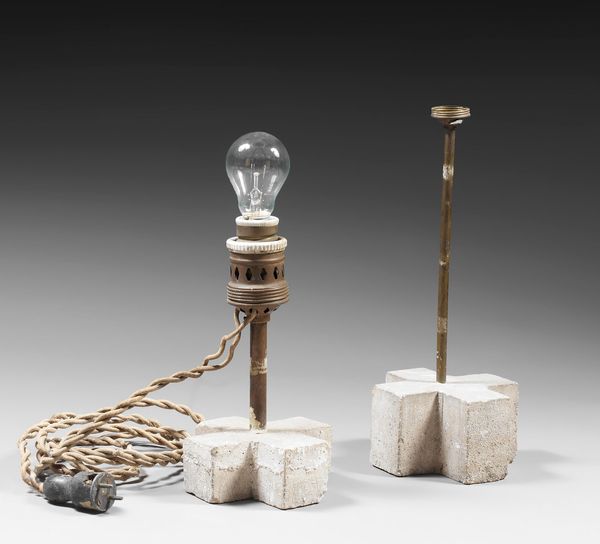
Double-cut (Nijū-giri) Flower Container (Hanaire), named Cool Summer Morning (Shinryō) 1600 - 1633
0:00
0:00
ceramic, wood
#
asian-art
#
ceramic
#
orientalism
#
wood
#
decorative-art
Dimensions: Flower container: H. 16 7/8 in. (42.9 cm); Diam. 3 3/8 in. (8.6 cm) Image (calligraphy): 11 1/8 × 17 15/16 in. (28.3 × 45.6 cm) Overall with mounting (calligraphy): 43 5/8 × 20 in. (110.8 × 50.8 cm) Overall with knobs (calligraphy): 43 5/8 × 22 1/4 in. (110.8 × 56.5 cm)
Copyright: Public Domain
Editor: We're looking at a Double-cut Flower Container made between 1600 and 1633 by Kōgetsu Sōgan. It's crafted from wood, with ceramic elements, and is currently housed at the Metropolitan Museum of Art. It feels very simple, almost minimalist in its design, and then juxtaposed with this elaborate title "Cool Summer Morning." What exactly are we meant to take away from that? Curator: It’s a fascinating piece because it brings together various social and artistic traditions. What appears simple on the surface speaks volumes about the tea ceremony culture in Japan, particularly its emphasis on natural materials. Note the conscious decision to present this container not just as a practical tool, but as something deeply connected with Zen aesthetics and wabi-sabi philosophy, highlighting the beauty of imperfection and impermanence. Does this align with what you think of its form and materials? Editor: Absolutely. I guess it does fit with the whole point of appreciating natural beauty in art. Are these containers seen as challenging traditional forms, though? Curator: Well, you have to consider the societal context. Flower arrangements were a powerful art form and a symbol of social status and aesthetic sensibility. Creating an unassuming bamboo container emphasizes naturalism and simplicity that challenges conventional notions. Also, note the container's placement within a museum setting and its implications on artistic presentation. Think about its socio-political resonance, and how these objects can shape the image of "Japaneseness" globally. Editor: That's an amazing insight! I never considered it on those terms. The title makes so much more sense to me now. Thanks. Curator: Of course! And hopefully you now realize these vessels were far more than utilitarian tools—they were also significant actors on the stage of cultural exchange.
Comments
No comments
Be the first to comment and join the conversation on the ultimate creative platform.
